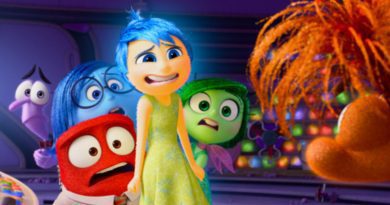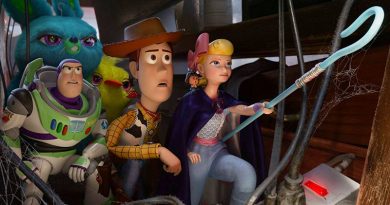Every Pixar Sequel Including Inside Out 2, Ranked
Pixar is renowned for its original storytelling from the day it gave us Toy Story in 1995. The animation studio never looked back ever since as they continued to raise the bar regardless of the photorealistic CG animation or the narrative approach that resonated with both adults and kids. Pixar also developed a few sequels, beginning with the successful Toy Story 2 in 1999 and there’s more to come over the years until today. With Inside Out 2 currently playing in cinemas, here are all the Pixar sequels ranked from worst to best. And yes, that includes Inside Out 2 as well.
Cars 2 (2011)


I love Cars but it’s a pity this 2006 underrated animated-movie gem didn’t get much love as some of the other beloved Pixar entries. I was looking forward to the sequel when it came out five years later, only to be disappointed by its rushed and even disjointed storytelling.
John Lasseter may return to direct the sequel but his decision to shift focus from Lightning McQueen’s (Owen Wilson) to McQueen’s comic-relief sidekick Mater (Larry the Cable Guy) somehow backfires, leaving the supposedly main protagonist weirdly playing second fiddle in his own movie. Lasseter, who pays homage to James Bond movies and the spy genre, manages to score some entertaining moments with lots of action and car chases. The animation is stunning as usual but overall, Cars 2 marks a rare misstep from the otherwise consistent Pixar outputs.
Incredibles 2 (2018)


When The Incredibles first debuted in 2004, not only did it rank as one of the best Pixar movies but also among the best superhero movies ever made. The reasons? Strong family dynamics revolving around the Parr family (husband-and-wife team Bob/Mr Incredible and Helen/Elastigirl along with their children including Violet, Dash and infant son Jack-Jack) and a memorable antagonist, Syndrome. Not to mention Brad Bird’s zippy and genre know-how direction deconstructing its familiar superhero tropes that combine thrilling action set pieces and thematically resonant drama.
By contrast, the sequel feels like a rehash of the first movie. The 2004 original saw Mr Incredible return to his superhero roots while Elastigirl continued to lay low as a stay-at-home mum looking after their kids. The sequel flips the more-or-less-the-same story around by switching genders: this time, it’s Elastigirl who does the superhero duty while Mr Incredible become a full-time dad taking care of the kids at home. Incredibles 2 also suffers from a subpar villain in the form of the enigmatic Screenslaver, who brainwashes people using hypnosis.
The sequel still has its moments including spectacular action set pieces and first-rate animation. The Parr family remains the reason to watch here and it’s fun to see how Mr Incredible coping with his stay-at-home dad routine. Then, there’s Jack-Jack, who steals the show during his hilarious encounter with a raccoon.
Cars 3 (2017)


The third Cars movie smartly course-corrects the entertaining but lacklustre globe-trotting sequel by going back to its roots. Pixar’s storyboard artist-turned-director Brian Fee made his feature debut and gave Lightning McQueen a much-deserved comeback, focusing on the dynamics between McQueen and motivational coach/training buddy, Cruz (Cristela Alonzo). It certainly evokes the same strong character dynamics between Paul Newman’s Doc Hudson and Wilson’s Lightning McQueen in the first movie.
Cars 3 also gets personal with McQueen handling the harsh reality of his ageing factor competing against the younger and faster Jackson Storm (Armie Hammer). The movie equally benefits from solid supporting voice works, both recurring (Larry the Cable Guy’s Mater) and new additions such as Chris Cooper’s grizzled turn as Doc Hudson’s former mechanic and crew chief, Smokey. The animation is top-notch and so are the race sequences while the movie effectively wraps up its conclusion that brings the Cars franchise to a full circle.
Finding Dory (2016)


What should have been a one-off in Finding Nemo, one of the best Pixar movies ever made, turns out that returning helmer Andrew Stanton, and this time, he co-directed the sequel with Angus MacLane managed to do the impossible. And that is transitioning the supporting character (Ellen DeGeneres’ Dory) as the main focus of the sequel — a narrative shift that works better than Cars 2 five years earlier.
Finding Dory may lack the strong emotional nuance that made the first movie such a beloved animated classic. And yet, the sequel’s relatable themes of family values and the fun, yet heartfelt adventure angle seen in Dory’s quest to locate her parents while wrestling with her short-term memory.
The animation looks vibrant and spectacular and apart from Dory, it’s nice to see other fan favourites like Marlin (Albert Brooks) and his son, Nemo (newcomer Hayden Rolence, who replaced Alexander Gould from the 2003 original) return for the second time around. The sequel also features a few new characters, notably Ed O’Neill’s scene-stealing supporting turn as Hank the no-nonsense red octopus.
Toy Story 4 (2019)






It’s the fourth Toy Story movie that shouldn’t have happened. The reason is plain and simple: Toy Story 3 wrapped up the trilogy perfectly on a high note. Attempting another sequel can easily be dismissed as a desperate cash grab. But the otherwise (nobody)-asked-for Toy Story 4 turns out to be a better-than-expected fourth entry.
Credits go to first-time director Josh Cooley, previously a storyboard artist for Pixar movies like Up and Inside Out, whose efficient direction works like a charm. The movie also gets an extra boost from Andrew Stanton and Stephany Folsom’s well-written script, even if the story treads familiar ground on some of the themes already explored in the trilogy.
And yet, Cooley does a good job of continuing Woody’s (Tom Hanks) arc post-Andy era while introducing a set of great new characters, notably Bonnie’s (Madeleine McGraw) makeshift plastic fork toy Forky (Tony Hale). Toy Story 4 may sideline most of the recurring characters (among them includes Tim Allen’s Buzz Lightyear and Joan Cusack’s Jessie) and while it doesn’t reach the emotional pinnacle seen in the third movie, it delivers enough fun and pathos as one of the unexpectedly best Pixar sequels.
Inside Out 2 (2024)






Like Finding Nemo, Inside Out is more of a one-off. But Kelsey Mann, replacing the first movie’s Pete Docter, justifies the existence of this otherwise unnecessary sequel by advancing the story of Riley in her adolescent years. The transitional period between childhood and adulthood which includes emotional and social changes offers ample room for Mann alongside screenwriters Meg LeFauve and Dave Holstein to explore Riley’s developmental experiences inside out.
The recurring five emotions — Joy, Sadness, Anger, Fear and Disgust — are fun to watch and so are the five newcomers, notably Maya Hawke’s scene-stealing voice work as Anxiety. The sequel also has a field day piling up with lots of clever puns (the Sar-Chasm comes to mind) and worthy comic relief (the introduction of Yong Yea’s PlayStation 2-like videogame character Lance Slashblade and Ron Funches’ animated pup Bloofy). Inside Out 2 may lack the emotional heights of the 2015 original but it was a great sequel nonetheless.
Toy Story 3 (2010)




Having re-watched Toy Story 2 and 3 consecutively, both sequels cover most of the same storytelling beats and thematic similarities. Like how the huggable strawberry-scented teddy bear Lotso (Ned Beatty) bears the same, too-good-to-be-true sneaky charm of Kelsey Grammer’s vintage cowboy doll Stinky Pete/The Prospector in Toy Story 2.
Toy Story 3 may have been a rehash of the second movie but it’s far from what I would call a lazy retread because director Lee Unkrich, who co-directed the previous instalment, does a great job exploring the fate of these talking toys after their grown-up owner, Andy (John Morris) is about to go to college. The movie’s second half, detailing Buzz Lightyear and the rest of Andy’s toys surviving in Sunnyside Daycare, evokes the feel and look of some of the best prison movies such as The Great Escape and Escape from Alcatraz.
Then comes the third act featuring a thrilling prison break sequence and most of all, a bittersweet, yet emotional gut punch of a finale, culminating in Andy bidding farewell to his beloved toys as he moves on to the next phase of his life.
Toy Story 2 (1999)




It’s hard to believe that Toy Story 2 was originally intended as a direct-to-video (!) release. If that’s not enough, the sequel lost 90% of the film after a Pixar employee accidentally deleted the files from its servers. Fortunately, supervising technical director Galyn Susman had a backup copy of the movie at home since she happened to work from home at the time after recently giving birth to a child. But the sequel ultimately underwent a massive do-over and needed to be completed in nine months to meet the November 1999 release date.
A rushed production like this would normally mean disaster. But in the case of Toy Story 2, it’s like a blessing in disguise that the filmmakers — John Lasseter, Ash Brannon and Lee Unkrich — managed to overcome the odds and give us one of the best Pixar sequels ever made. The follow-up to the 1995 already-groundbreaking original improves by leaps and bounds from its CG animation to the expansion of Woody, Buzz Lightyear and the rest of the gang’s story arc.
The movie also does an excellent job exploring Woody’s origins while the introduction of the cowgirl doll Jessie (Joan Cusack) leads to one of the most emotionally penetrating moments in Pixar history. A flashback moment about Jessie’s once-happy life with her owner Emily but eventually left behind while Sarah McLachlan’s heartbreaking song, “When She Loved Me” played in the background.
While Toy Story 2 hits all the right emotional buttons, the sequel doesn’t forget to have fun, notably the elaborate sequence in Al’s Toy Barn from Buzz Lightyear encountering Ultra Buzz/Utility Belt Buzz Lightyear to a comedic riff of The Empire Strikes Back revolving around Buzz’s nemesis, Zurg (Andrew Stanton).




